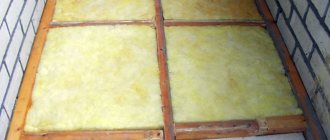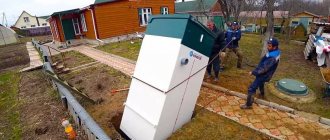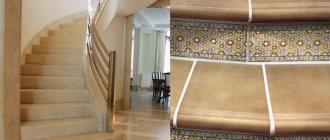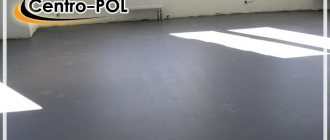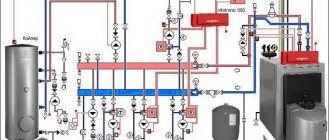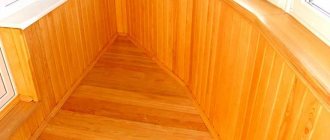Gas pipes are made of steel alloys. Therefore, they can be subject to corrosion, which occurs due to high humidity in the kitchen. Painting gas pipes is the most common way to protect them. In addition, it can be used to give the external space an original look.
Before painting gas pipes, you need to decide on the type of material. To do this, you can use regular PF paint or nitro enamel. In order for the applied coating to last longer on the pipe, its surface must first be treated and prepared.
The surface painting process is carried out in 3 main stages. Initially, preliminary preparation and removal of the old coating are performed. Then you need to apply primer to the cleaned surface. And the final stage is applying paint.
Before you begin removing old paint, you must completely dry the pipes.
If you neglect this procedure, the new coat of paint will not last long. Its service life will be 1-2 years, and then everything will have to be painted again.
Before starting cleaning, turn off the gas supply. This is due to the fact that in the process of removing the old layer, static voltage discharges may occur. These discharges can lead to ignition and further fire.
For proper cleaning, you can use a brush with metal bristles. It will completely remove rust and corrosive inclusions. To make the work easier, you can use a solvent. To avoid inhaling its vapors, you must use a respirator or gauze bandage.
After complete cleaning, begin applying primer. The soil is laid in 2 layers using a brush. The second layer will help remove all irregularities on the pipe body. Complete drying of the soil occurs after 40-48 hours.
Having finished with these works, they move on to the painting process itself. The paint should be applied in an even layer, avoiding smudges. The layer should be thick enough, so you shouldn’t thin the paint too much. After the first layer has dried, the second is applied. This will help the pipe surface last longer.
Previously, representatives of gas services required that yellow enamel be used. Currently, they do not pay much attention to this. Therefore, you can choose the color of the enamel based on your own needs and tastes.
All requirements for painting gas pipes are described in document PB 12-529-03.
Immediately about the color. According to the requirements of the state standard, gas lines must be highlighted with yellow paint. As for internal gas pipes, the color and composition of the paint itself are not regulated in any way, that is, you can paint it with any metal paints for interior and exterior work, whatever color you like.
Read more: How to time work hours example
Pipes in a room can be painted with inexpensive paint, saving money. It will last a long time.
Everyone paints gas pipes with ordinary enamel paints that are sold in the markets. This is mainly pentaphthalic (denoted by the letters PF). The most common are PF-115 and PF-266. Pentaphthalic paint coatings are resistant to water and light. They can be washed using household detergents.
PF-115 enamel is used for exterior work, because... has high weather resistance, PF-266 is used exclusively for interior work, because any atmospheric influences are destructive for it. Therefore, if you choose pentaphthalic, it is better to paint PF-115. She is more resilient.
Pentaphthalic enamels have a good shine and retain their protective properties for 4-6 years, and indoors for more than 15 years (this is if the paint is really high-quality from a reputable manufacturer).
Enamels are diluted to working viscosity with solvent RS-2 (or another one offered in the store).
To increase the protective properties of pentaphthalic enamel, it is applied to previously primed surfaces. The following primers are used: FL-03-K, 138, FL-OZZH, etc. If everything is done especially carefully - thoroughly clean the metal surface from rust, dust and dirt, degrease before priming, prime and then paint - you can count on a longer period paint coating services. BUT this is quite difficult to do if the surface is a gas pipe. There are many difficult to reach areas. This turns the job of high-quality painting into a rather labor-intensive and complex task.
In this case, it is better to use primers that paint against rust and are compatible with pentaphthalic enamels. For example, PF-010M.
If you paint with a brush (the most common option), it is better to apply both the primer and the paint itself in 2 layers (with intermediate drying, of course). This way we exclude the option of unpainted areas of metal that are exposed or covered with too thin a layer, through which all negative influences will affect the metal (moisture, air oxygen, etc.).
It is impossible to imagine modern residential buildings and industrial structures without all kinds of communications: water pipes, gas pipelines, cables, and so on. Currently, many pipelines (for example, cold and hot water supply) are made of plastic. However, metal pipes continue to be used. To increase service life and improve appearance, these pipelines need to be painted.
Read more: Incorrect connection of the electricity meter
As a rule, the reasons for deciding to paint pipes are:
- Unsatisfactory condition of the pipe surface.
- Corrosion protection.
- Improving the interior of the room.
Paint for gas pipes: rules and regulations for painting home and street gas pipelines
It is worth agreeing that the condition of gas pipeline communications must be treated with special responsibility.
Therefore, the paint for them must be selected with special care, because it must protect the metal structure well from corrosion. True, gas pipes, painted according to the generally established standard, often spoil the design of the room. We will talk in this article about when it is required to adhere to the standards established by law, and in what cases they are not required. From it you will also learn how to select paint for gas pipes and paint them. In addition, we will tell you the secret of how to correctly determine the required amount of paint for painting pipes.
Reasons why gas pipes need to be painted
They need to be painted not only for a beautiful appearance.
The main reasons why they need to be painted are:
- highlighting the gas pipeline with color from other internal communications;
- protection of metal from moisture, which significantly increases the service life of pipes.
The organization servicing the gas pipeline has the right to disconnect a residential building or any apartment in it if the gas pipes are in poor condition.
According to the standards approved by our legislators, all gas pipeline networks of high-rise buildings must be on the balance sheet of the housing and communal services. In individual apartments and individual houses, responsibility for their condition falls on the owner of the property.
What is stated in the regulations?
They indicate the color that gas pipes should be painted. In accordance with the color standard cards, they must have yellow color N205-206 (GOST 14202-69).
Street sections of the gas pipeline must be painted one yellow color. Gas pipes may be painted to match the color of the house façade if the appropriate permit is obtained from the organization servicing the gas pipeline. The color of pipes inside housing is not regulated by regulations.
Special requirements for the color of pipes are not a special whim of gas workers. This is a special coloring that shows what substance is transported through the laid pipes. With its help, if a gas leak occurs, emergency service specialists will quickly find the problem and fix it, which will allow them to prevent a strong gas explosion or fire.
If the pipe is painted any other color, then in an emergency when the owner of the house is not present, emergency service specialists will be disoriented and will not be able to quickly fix the problem, which can lead to tragic consequences.
The “Safety Rules for the Gas Distribution and Gas Consumption System”, clause 2.3.9 PB 12-529-03 also states that paint must be applied to pipes in two layers. In this case, they must first be coated with a primer and other preparatory work must be done.
Heat-resistant acrylic enamel
Odorless pipe paint is acrylic enamel. Due to the fact that it does not have a pungent odor, this enamel is an ideal paint and varnish material for work carried out inside residential premises.
The painted surface becomes absolutely smooth and tactilely resembles plastic.
Since not all acrylic enamels are heat-resistant, when purchasing, you must carefully read the information regarding the temperature range of its use. The minimum value for using these enamels is 80 ºС.
A significant advantage of these paints is their drying time - for the first layer the value ranges from ten minutes to one hour, and from one to two hours for the second.
To achieve a high-quality result, it is necessary to prime the surface to be painted. When carrying out work, it is necessary to avoid contact with moisture on the surface to be painted.
The consistency of acrylic resembles medium-thick sour cream; it does not spread, which eliminates the possibility of smudges.
As stated above, this enamel should be applied to a previously primed surface in two layers. Violation of painting technology entails a significant deterioration in its quality.
The only drawback of using this material is its low resistance to mechanical loads.
Color solution
What color should you paint gas lines?
According to the source of information (Safety Rules for the Gas Distribution System), painting occurs as follows:
1. A gas pipeline passing above the ground must be painted with two layers of yellow paint. Varnish and enamel of a similar color are also allowed. The dye must meet the requirements of the substance for work on the outside of the product. Color marking is necessary to identify an object.
2. The gas system, which runs over the facades of the structure, may have the color of the structures that enclose it.
We recommend: Stainless steel exhaust pipe for a geyser: installation features
Painting of internal gas pipeline structures inside residential premises and the color scheme for them are not provided at all.
Owner search
Who is responsible for painting the gas pipe?
Many people ask this question. Unfortunately, the person responsible for such a process has to be found separately in each individual case. In such cases, you must be guided by the gas pipeline line maintenance agreement.
In certain areas, responsibility is distributed in this way
1. In apartment buildings, pipeline lines inside each apartment must be painted by the owners of the apartments. Those gas pipes that run along facades, entrances or streets must be painted by the gas supply companies or local utility service (the terms of the service contract must contain such obligations). To divide the zone, you must be guided by the walls of the apartments . It must be taken into account that such duties relate only to painting pipes. But maintenance actions regarding the shut-off elements of the valves should be performed only by the gas service.
What is this for?
Painting gas communications is far from an aesthetic matter. This is required in order to:
1. Identify the gas pipeline by color, do not confuse it with other types of pipes. This is especially necessary in industrial enterprises and boiler houses. Naturally, it is much easier to determine the desired line based on the external signs and color of the pipes, as opposed to studying all the documents for the junction.
An important nuance is that marking gas pipes by color is only necessary for industrial enterprises or when laying a gas pipe above ground. There are no government requirements for residential premises, either indoors or outdoors.
2. Create protection against corrosive formations. Since there is no oxygen accumulation or water vapor inside the pipe, long-term operation is directly dependent on the level of resistance to corrosive formations of external surfaces.
how to paint gas pipes outdoors
Choosing paint for gas pipes
Gas pipelines and metal structures are often painted with alkyd paint. Designated according to GOST - PF-115. It is made from resin, so it has a certain viscosity.
It must be remembered that it does not have a very pleasant smell. Another important disadvantage is that she is afraid of fire.
Its main advantages: strength and resistance to adverse influences (moisture, aggressive substances, etc.). Another plus is the low price.
When choosing paint for painting pipes in your apartment, it is not necessary to pay attention only to the recommended compositions.
It is allowed to apply the following compositions to them:
- polyurethane paint - has a fairly elastic structure, excellent adhesion and a long service life;
- epoxy paint - has a long service life, although it is not elastic;
- electrically conductive substance - is the most reliable composition due to its good anti-corrosion characteristics and long service life.
Today there are paint compositions that can be applied directly to rust, although it is still recommended to first clean the pipes from it: first of all, you need to clean them of old paint and rust, then degrease the treated surface, and then apply a high-quality primer to it.
Paints for gas pipes are designated by a complex abbreviation, so the word “paint” is often not on their label, which makes it difficult for the average person to choose.
The most popular paints for gas pipes today are:
- Epostat is an epoxy enamel for metal with excellent anti-corrosion properties. It is able to withstand elevated temperatures and frosts, while sleeping quickly;
- Zinconol - reliably protects metal structures in all climatic zones, while having good adhesion;
- Nerjachim - protects metal products from corrosion. It can be applied to rust. It dries quickly;
- Polyurethol - for its application it is not necessary to pre-prime the pipes. It is resistant to acids, moisture and petroleum products.
The technology for painting gas pipelines is practically no different from applying paint to other metal structures. There is still one peculiarity - it is prohibited to use heating devices to remove a layer of old paint.
Temperature ranges
At what temperature is the use of special, heat-resistant primers required? Let's analyze the coating requirements at different operating temperatures.
Up to 60C
In particular, elements of autonomous heating systems fit into this temperature range. Their typical temperature difference between supply and return is 70/50C, which gives no more than +60C on the surface of the heating devices.
At temperatures from 0 to +60 you can safely use general purpose paints and primers. If the painting technology is followed (that is, if the surface is cleaned well and the primer matches the type of paint and varnish material), there is no need to worry about paint delamination or fading.
General purpose paints can be used in an autonomous heating circuit.
Up to 100C
The only significant difference from the previous scenario is the need to use paints with persistent pigments. The binder and primer remain the same as before: all popular types of paint can withstand prolonged heating without destruction.
Up to 300C
And here comes the high point of heat-resistant soils. If the instructions for using a temperature-resistant coating indicate the need for priming, you will have to select special compounds that can withstand prolonged heating and retain their properties over the entire range of operating temperatures.
Painting gas pipes
First of all, it is worth remembering that the paint for painting gas pipes serves as their anti-corrosion protection.
Advice! Therefore, having calculated the required quantity using the above method, purchase it with a reserve, since it is not worth saving in this case. Moreover, there are no standards for the consumption of coloring material.
And one moment. Modern paint used for gas pipes usually has a specific name. The common man sometimes cannot understand him. The fact is that the word “paint”, as a rule, is absent on the label of a unit of this product. To give you an idea of what we are talking about, below are the most popular painting materials today that can be used to paint a gas pipe.
Causes and dangers of gas leaks
Careless attitude when installing gas equipment can lead to gas leaks in the apartment. At the same time, there are two types of causes of leakage: domestic accidents and professional defects.
Professional deficiencies may include:
- defects in pipes and gas pipelines;
- flaws in geysers;
- damage to the cylinder;
- broken burner;
- poor or incorrect fastening of the hose and the appearance of kinks and cracks;
- violation of the tightness in the fastening of the thread of the nut that connects the plate to the hose;
- wear or other defects in the hose gasket or seal material on the faucet.
Flaws in geysers can be the cause of gas leaks. In the case of such leaks, it is impossible to immediately determine why there is a smell of gas. In domestic conditions, other reasons are also possible, which are most often associated with the human factor:
- the tap is not closed or is poorly closed;
- The fire on the stove or oven has gone out, but the gas continues to flow.
The main danger of natural gas is that it has a neutral odor and is colorless. However, in order to detect leaks in a timely manner, manufacturers add special additives to the gas that have a specific pungent odor.
Personal sensations of a person who has been poisoned by household gas include: headache, nausea, suffocation, dizziness, dry mouth, lacrimation, burning and redness of the eyes, general weakness, impaired appetite and sleep, etc. If there is a large accumulation of gas in a closed room with access to oxygen and other explosive sources (fire, electricity, etc.), an explosion and collapse of the room will most likely occur.
Features of dyeing technology
Before painting these pipes, it is necessary to carry out preparatory measures.
First you need to clean them of old paint and rust with a wire brush. The use of solvents facilitates this procedure. To protect your respiratory system from harmful fumes, you must wear a respirator.
After cleaning the pipes, their surface must be thoroughly degreased. The consumption of the degreaser per 1 m² can be found on its label. Next, you need to apply two layers of primer to the pipes. This should be done with a brush.
Then you need to wait for the primer to dry, which takes 24 hours. If the room temperature is less than 15°C, it will take longer to dry. Then you need to apply paint evenly to the pipes so that drips do not form.
It needs to be applied in a thick layer. After the paint has dried, you need to apply the next layer. This painting technology allows for maximum protection of metal structures from corrosion.
Gas workers recommend painting gas pipes with yellow paint. True, this does not apply to pipes located in apartments and individual houses. They can be painted to match the design used in the home.
The pipe must be painted with a soft brush, and the coloring composition must be applied in small portions so that drips do not form. In this case, the brush must be held perpendicular to the surface to be painted. To apply paint to hard-to-reach areas of the pipe, you need to bend the brush. It is better to paint the pipe before wallpapering the walls or finishing with other materials.
When painting with alkyd paint, the second layer must be applied after 4-6 hours. Modern paint compositions can dry faster, so you need to look at their packaging for the exact time.
Fighting condensation
Condensation on pipes is a fairly common problem. It becomes especially relevant in the summer, when the air in the apartment is quite hot. Drops of water flowing down water pipes, gradually forming entire puddles on the floor, cause a lot of trouble.
Condensation can be dealt with using various methods. Before proceeding directly to getting rid of the problem, you should establish the cause of its occurrence.
Condensation on metal pipes can form as a result of:
- Poor ventilation
- Leaks in neighbors' pipes
- Leaking faucets and other plumbing problems
As a rule, the formation of condensation on pipes is associated precisely with temperature changes. It is not possible to avoid them. However, it is possible to ensure that pipelines are adequately protected by following certain procedures.
Methods for dealing with condensate on pipes:
- First of all, you need to make sure there is sufficient ventilation in the bathroom. The normal indoor humidity level is considered to be up to 50%. If necessary, you should take care of installing exhaust ventilation in the room. After completing the water procedures, you need to leave the door to the bathroom open.
- It is also necessary to take care of eliminating leaks in the flush tank and faucet. Repair of plumbing equipment is one of the options for solving the issue of combating condensation.
- A fairly simple and effective way to solve the problem is to wrap pipes with rags and apply epoxy putty. The methodology for implementing the work is as follows. The pipe is first cleaned of traces of rust using sanding paper, then degreased using acetone. Next, the first putty layer is applied and the pipe is bandaged with fabric, which ensures epoxy impregnation of cold water supply pipelines. After the epoxy has hardened, a second layer of putty is applied. This method demonstrates sufficient efficiency and cost-effectiveness. However, it spoils the appearance of the entire bathroom, which is why it is not very popular today.
- The most effective and modern way to get rid of the problems of condensation on pipes is to create a special coating. Just a couple of decades ago, the post-Soviet space could not imagine such a convenient thing as heat-insulating paint. Today you can buy it at a regular hardware store. This thermal paint will most effectively solve the problem of moisture formation on metal pipes. When purchasing this paint, preference should be given to trusted manufacturers with a decent reputation. This way you will save your money. Akterm's products have managed to win consumer recognition. Akterm Anti-Condensate is a special product designed to solve the issue of condensation formation as a result of a sharp temperature difference on metal surfaces. The use of such thermal paint prevents the appearance of condensation on cold water supply pipelines, thereby preventing the occurrence of fungus, mold, rust and freezing on their surface. The product is non-toxic and completely safe for human health.
By using this option to combat condensation, you can significantly extend the life of your pipes. Thermal paint does an excellent job of solving the problem of an insufficient layer of thermal insulation and a decrease in the heat-protective qualities of insulation, which are the main reasons for the formation of condensation on metal pipes and surfaces.
Types of paint
To paint communications on the street, anti-corrosion agents designed for metal products are used. This category also includes “3 in 1” primer enamels, which, as a result of contact with iron oxides, form a protective film firmly adhered to the metal surface.
Pay attention to: How to paint slopes?
This treatment can be used in cases where the corrosion thickness is no more than 0.1 mm. Compositions are produced in the form of a solution, suspension and emulsion.
For interior work, any types of metal paints are used, with the exception of vapor-permeable ones.
External gas pipelines
Popular means of painting external gas pipelines include:
- Alkyd enamel that can be applied to hot pipes. The composition forms a thin coating that is resistant to any weather conditions. Its service life is at least 5 years. You need to work with alkyd mixtures carefully, as they are flammable and have a specific odor.
- Polyurethane paint. It is distinguished by elasticity and good adhesion to the surface. The substance does not lose its qualities for 10-12 years.
- 2-component epoxy composition is wear-resistant, but not elastic.
- Conductive paint, a dispersion of aluminum or zinc powder in an organic varnish, provides 2-level corrosion protection.
Stages of work
Having chosen what to paint the pipe with, you should not immediately apply the paint. It is necessary to carry out preparatory work and select the necessary materials. You may need:
- brush (if the pipe size is large, you can use a roller);
- metal hard brush;
- acetone or other degreaser;
- primer;
- selected paint composition.
Further work will vary depending on what the chimney is made of. Chimneys are made from:
Before starting work, it is recommended, if possible, to stop the gas supply to the chimney and allow the pipe to cool to ambient temperature. This will not only reduce injuries (the risk of getting burned on a hot surface) and the toxicity of the paint and varnish composition, but will also allow the dye to form a more durable film when it hardens.
Metal surfaces
Pipes are made mainly of stainless steel and have recently become the most popular in private homes. They are installed not only on gas boilers and water heaters, but also on brick-built stoves. Stainless steel chimneys are durable and comfortable. Their main advantage is ease of installation. But before painting stainless steel, the surface must be prepared. To do this, do the following:
- clean the metal from traces of old coating, dust and other contaminants using a metal brush;
- wash and dry thoroughly;
- treated with a degreaser;
- apply an anti-corrosion mixture (if the soil contains anti-corrosion additives, then this step can be omitted);
- after drying, the chimney is covered with 2-3 layers of primer.
When the primer is dry, you can start painting. Painting is carried out along the perimeter and starts from the top.
Anti-corrosion protection is of great importance for the service life of the chimney. At high operating temperatures and aggressive environments, the protective paint layer must be resistant to these harmful factors. Therefore, painting chimneys is a necessity.
Brick chimneys
Nowadays brick is less popular, but until recently chimneys were made mainly of it. But how to paint brick? First of all, the structure must be prepared:
- tighten loose bolts on the connecting clamps;
- remove old paint or lime;
- wash away soot, soot and dirt;
- restore the damaged layer of plaster (it is not necessary to completely change it, just apply the mixture to the damaged areas and wait for it to dry);
- Apply at least 2 coats of primer (more is allowed).

